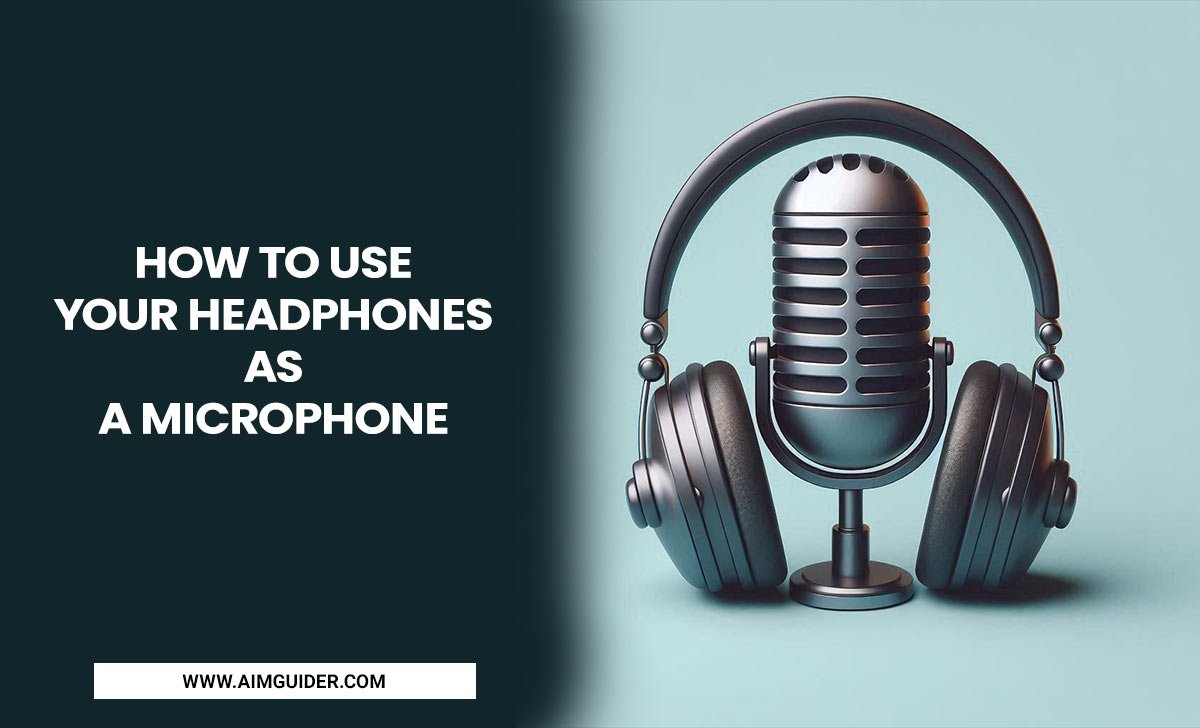Smart TV Under $500 Fix: Essential Solutions
Is your budget-friendly smart TV giving you trouble? Don’t worry! Many common issues with smart TVs under $500 have simple fixes. This guide will walk you through essential solutions, from connectivity glitches to app problems, empowering you to get the most out of your entertainment without breaking the bank. We’ll cover everything you need to know to get your TV running smoothly again.
Common Issues with Smart TVs Under $500
Smart TVs, especially those in the budget-friendly category, can sometimes present certain quirks. It’s not uncommon for users to encounter Wi-Fi connection problems, slow app performance, or issues with picture and sound settings. Sometimes, software glitches can make even simple tasks frustrating. The good news is that most of these hitches are fixable with a few straightforward steps. Let’s dive into what you can do.
1. The Power Cycle: Your First Line of Defense
When in doubt, a power cycle is often the quickest and easiest fix for many electronic devices, and your smart TV is no exception. This is essentially a hard reset that can clear temporary glitches in the TV’s operating system.
How to Perform a Power Cycle:
- Turn off your smart TV using its remote control.
- Unplug the TV from the wall power outlet. Crucially, don’t just turn it off at the power strip; physically disconnect it from the source.
- Wait for at least 60 seconds. This allows all residual power to dissipate from the TV’s internal components.
- While unplugged, press and hold the physical power button on the TV itself (not the remote) for about 15-30 seconds. This helps to discharge any remaining power.
- Plug the TV back into the wall outlet.
- Turn the TV back on using its remote control or the physical power button.
This simple reboot can resolve issues like a frozen screen, unresponsiveness, or minor connectivity hiccups. It’s the tech equivalent of taking a deep breath and starting fresh.
2. Wi-Fi and Network Connection Problems
Connectivity is king for smart TVs. If your TV can’t get online, its smart features are pretty much useless. Here’s how to troubleshoot network issues.
Check Your Wi-Fi Signal:
Is your Wi-Fi signal strong enough where the TV is located? Obstacles like walls, furniture, and other electronic devices can interfere with the signal. If possible, try moving your router closer to the TV or vice-versa, or consider a Wi-Fi extender if the distance is a significant issue.
Restart Your Router and Modem:
Just like your TV, your router and modem can benefit from a good old power cycle. Unplug both devices, wait for about 30 seconds, and then plug them back in, starting with the modem first, then the router. Wait for them to fully boot up before trying to connect your TV again.
Forget and Reconnect to the Network:
On your TV, go to the network settings. Find your Wi-Fi network, select “Forget Network” or “Disconnect,” and then scan for networks again. Re-select your network and re-enter your Wi-Fi password. Double-check you’re entering the password correctly, as this is a common typo trap.
Check for Network Outages:
It might not be your TV at all! Check if your internet service provider (ISP) is experiencing any outages in your area. You can usually do this by visiting their website or calling their support line. A quick check can save you a lot of troubleshooting time.
Ethernet Connection:
If Wi-Fi continues to be unreliable, and your TV has an Ethernet port, consider using a wired connection. An Ethernet cable directly connecting your TV to your router often provides a more stable and faster internet experience. For more on network basics, the Federal Communications Commission (FCC) offers helpful consumer information.
3. App Performance Issues
Apps are the heart of your smart TV experience. If your favorite streaming app is crashing, freezing, or buffering excessively, here’s what to do.
Update the App:
Check if there’s an update available for the problematic app. App developers frequently release updates to fix bugs and improve performance. You can usually find this option in your TV’s app store or settings menu.
Clear App Cache and Data:
Like apps on your phone, smart TV apps can accumulate cache and data that, over time, might cause issues. Go to your TV’s application settings, find the specific app, and look for options to “Clear Cache” or “Clear Data.” Clearing cache usually removes temporary files, while clearing data resets the app to its default state (you might need to log in again).
Uninstall and Reinstall the App:
If clearing data doesn’t help, try uninstalling the app completely and then reinstalling it from the app store. This ensures you have a fresh copy of the app, free from any corrupted files.
Check App Requirements:
Ensure your TV meets the minimum system requirements for the app you’re trying to run, especially if it’s a demanding application. You can usually find this information on the app’s page in the TV’s app store.
Update TV Software/Firmware:
Sometimes, app issues stem from outdated TV software. Navigate to your TV’s settings menu and look for a “Software Update” or “Firmware Update” option. Keeping your TV’s operating system up-to-date is crucial for app compatibility and overall performance.
4. Picture and Sound Quality Problems
Frustrating for movies and shows, a garbled sound or a dull picture can really detract from your viewing pleasure. Let’s troubleshoot these common woes.
Check Basic Settings First:
It sounds simple, but often the culprit is a setting inadvertently changed. Go into your TV’s picture and sound settings menus. Ensure brightness, contrast, color, and sharpness are set to your preference. For sound, check the volume levels, balance, and any equalizer settings.
Picture Mode/Sound Mode Presets:
Many TVs come with preset picture modes (like “Cinema,” “Sports,” “Standard”) and sound modes. Try cycling through these to see if one improves the quality to your liking. Sometimes, a specific mode might be interfering with optimal viewing.
Source Device Settings:
If the problem appears only when using a specific external device (like a Blu-ray player, streaming stick, or game console), check the settings on that device. Ensure its video and audio output settings are configured correctly for your TV. For example, ensure it’s set to output in a resolution your TV supports.
Cable Connections:
Loose or damaged HDMI cables can cause picture flickering, color distortions, or no signal at all. Ensure all cables are securely plugged into both the TV and the source device. If possible, try a different, known-good HDMI cable to rule out a faulty cable. For more in-depth information on display standards, the HDMI Forum provides details on specifications.
Audio Output Settings:
If you’re using an external sound system (soundbar, AV receiver), ensure your TV is set to output audio to the correct device. This might be under “Audio Output,” “Digital Audio Out,” or “Sound Output” settings, which could involve selecting HDMI ARC, Optical, or Bluetooth.
Picture/Sound Reset:
Many TVs allow you to reset picture and sound settings to their factory defaults. This can be a good way to undo any problematic manual adjustments you might have made.
5. Remote Control Issues
A malfunctioning remote can be incredibly frustrating, making it hard to control your TV at all.
Check the Batteries:
This is the most common remote problem. Replace the batteries with fresh ones, ensuring they are inserted correctly according to the polarity markings.
Obstructions:
Make sure there’s a clear line of sight between the remote and the TV’s infrared (IR) sensor. Remove any objects blocking the path.
Remote Reset:
Some remotes can be reset. Try removing the batteries, holding down any button for a few seconds, and then reinserting the batteries. For Bluetooth remotes, you might need to re-pair them through your TV’s settings.
Clean the Remote:
Over time, dirt and grime can build up around buttons, making them sticky or unresponsive. Gently clean the remote with a slightly damp, soft cloth. Avoid using harsh chemicals.
Try the TV’s Physical Buttons:
Most smart TVs have a few physical buttons on the TV itself (usually on the back, side, or bottom) for basic functions like power, volume, and channel. Use these to navigate to your TV’s settings and troubleshoot further, or to access a feature like updating the remote’s software if it’s a smart remote.
Smartphone Remote App:
Many smart TV brands offer a companion smartphone app that can function as a remote. Download your TV brand’s official app from your phone’s app store. This is a great fallback if your physical remote isn’t working and can often provide more functionality.
6. Software Glitches & Freezing
Is your TV’s menu sluggish, or does it freeze up entirely? Software issues are common, especially after updates or prolonged use.
The Power Cycle (Again!):
Yes, it’s that effective. A power cycle (as described in Section 1) is often the first and best solution for a frozen or unresponsive TV.
Check for Software Updates:
Ensure your TV’s operating system is up-to-date. Go to the TV’s settings menu and look for “Software Update,” “System Update,” or “Firmware Update.” Manufacturers, like Samsung, provide support pages detailing how to update their models.
Disable Auto-Play or Background Features:
Some TVs have background features or auto-play options that can consume resources and lead to sluggishness. Check your TV’s general settings for anything that might be running unnecessarily.
Factory Reset (Last Resort):
If all else fails, a factory reset will return your TV to its original out-of-the-box state. This will erase all your settings, installed apps, and account information, so you’ll need to set up your TV again from scratch. It’s a powerful fix for persistent software problems. Look for “Factory Reset,” “Initialize,” or “Reset to Default Settings” in the system or support menu. Be sure to back up any important settings if possible, though this is rare for most users.
Table: Quick Troubleshooting Checklist
Here’s a handy table to quickly reference potential solutions for common smart TV problems:
| Problem | Initial Steps | Advanced Steps | When to Seek Professional Help |
|---|---|---|---|
| No Power | Check power cord, outlet, remote batteries. | Try a different outlet, check surge protector. | If TV still won’t power on after all checks. |
| No Internet | Restart TV, router, modem. Check Wi-Fi password. | Forget/reconnect network, try Ethernet, check ISP. | If network is stable but TV still won’t connect. |
| App Crashing/Freezing | Restart app, restart TV. | Update app, clear app cache/data, reinstall app, update TV software. | If the issue persists with multiple apps. |
| Poor Picture/Sound | Check TV settings (brightness, volume), check source settings. | Try different picture/sound modes, replace HDMI cable, check audio output settings. | If picture/sound issues are consistent across all inputs and apps. |
| Remote Not Working | Replace batteries, check line of sight. | Clean remote, try smartphone app, re-pair Bluetooth remote. | If the remote is physically damaged or unresponsive after troubleshooting. |
7. Input Lag for Gamers
For gamers, delays between pressing a button and seeing the action on screen (input lag) can be a deal-breaker. Budget TVs can especially suffer from this.
Enable “Game Mode”:
Most smart TVs have a “Game Mode” or similar setting. This mode significantly reduces the TV’s image processing, which is a major contributor to input lag. You can usually find this in the Picture Settings menu.
Disable Motion Smoothing/Interpolation:
Features like “Motionflow,” “TruMotion,” or “Auto Motion Plus” attempt to make motion smoother by inserting extra frames. While great for movies, they add significant input lag for gaming. Turn these off in the Picture Settings.
Direct HDMI Connection:
Use a direct HDMI connection from your gaming console or PC to your TV. Avoid using HDMI splitters or switches if possible, as these can sometimes add latency.
Check Console Settings:
Ensure your gaming console is set to output at the correct resolution and refresh rate that your TV supports. Sometimes, mismatching settings can cause performance issues.
Consider External Devices:
If you’re using an external streaming device for gaming (like a cloud gaming service), ensure that device itself is performing optimally and has a stable connection. For more on display technologies, the Rtings.com TV review site offers detailed input lag measurements for various models, which can be a useful comparative resource.
Frequently Asked Questions (FAQ)
Q1: My smart TV is very slow. What can I do?
A1: First, perform a power cycle. Then, ensure your TV’s software is updated and that your Wi-Fi connection is strong. If specific apps are slow, try clearing their cache or reinstalling them. For persistent slowness, a factory reset might be necessary.
Q2: How do I fix a smart TV screen that’s blacked out?
A2: Ensure the TV is powered on and that the correct input source is selected. Check all cable connections, especially HDMI. Try a power cycle. If the screen remains black, it could be a hardware issue requiring professional repair.
Q3: My smart TV won’t connect to Wi-Fi. What’s wrong?
A3: Restart your TV, router, and modem. Double-check your Wi-Fi password. Try “forgetting” your network on the TV and reconnecting. Ensure your router is broadcasting a 2.4GHz or 5GHz network, depending on your TV’s compatibility.
Q4: Can I update my older smart TV to get new apps?
A4: Generally, older smart TVs have limited operating systems and hardware. While you can update the TV’s firmware, adding new apps not supported by the original software or hardware is usually not possible. Consider an external streaming device like a Roku or Fire TV Stick.
Q5: What’s the simplest way to improve picture quality on my budget smart TV?
A5: Start by adjusting the basic picture settings like brightness, contrast, and sharpness. Try different picture modes (e.g., Cinema, Standard). Ensure you are using a good quality HDMI cable if using external devices and that the source device is set to output a compatible resolution such as 1080p or 4K.
Q6: My smart TV remote is acting up. Is there a fix besides new batteries?
A6: Yes! Try re-pairing the remote if it’s Bluetooth, cleaning the buttons, and ensuring there are no obstructions. Many TV brands offer a smartphone app that can act as a replacement remote.
Q7: Should I perform a factory reset on my smart TV often?
A7: No, a factory reset should be a last resort. It erases all your settings and data. Only perform it if other troubleshooting steps haven’t resolved persistent software issues. Regular software updates are more beneficial and less disruptive.
Conclusion
Owning a smart TV under $500 doesn’t mean you have to constantly battle technical headaches. By understanding these common issues and applying the straightforward fixes outlined in this guide, you can effectively troubleshoot and maintain your TV. From the simple power cycle to managing app performance and network connections, you’re now equipped to tackle most common problems. Remember to keep your TV’s software updated and explore your settings for optimal picture and sound. With a little know-how, your budget-friendly smart TV can continue to be a fantastic source of entertainment for years to come. Enjoy your seamless viewing experience







